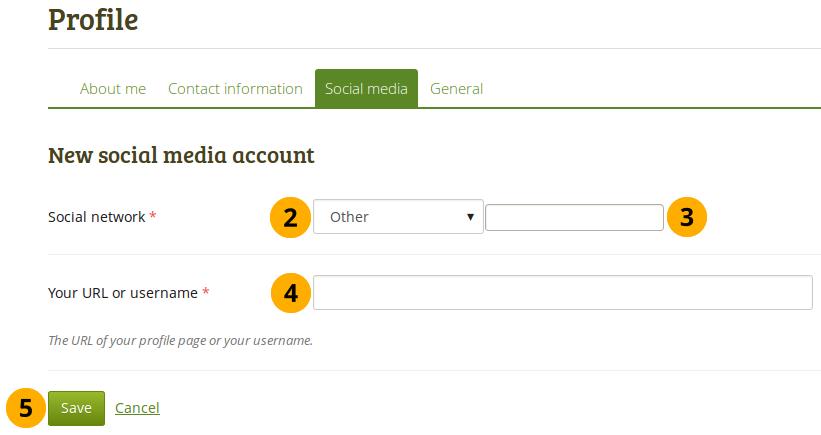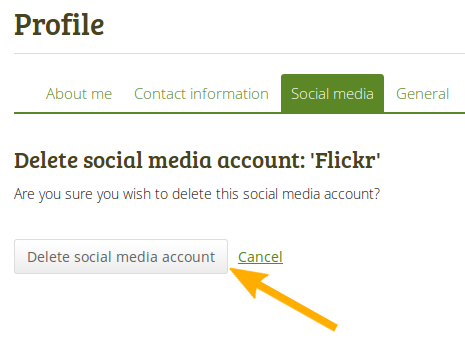Your Profile
Your Profile area stores your contact and personal information. Each of the profile fields can be considered separate artefacts which you can add independently to your profile page or any portfolio page. Thus, you can reveal as little or as much information about yourself to others as you wish.
About me
Content → Profile → About me
You must provide a first and last name. All other information is optional. You name is visible to other Folioz users. You may choose to have a Display name. You can change the information here at any time unless an administrator locked certain fields.
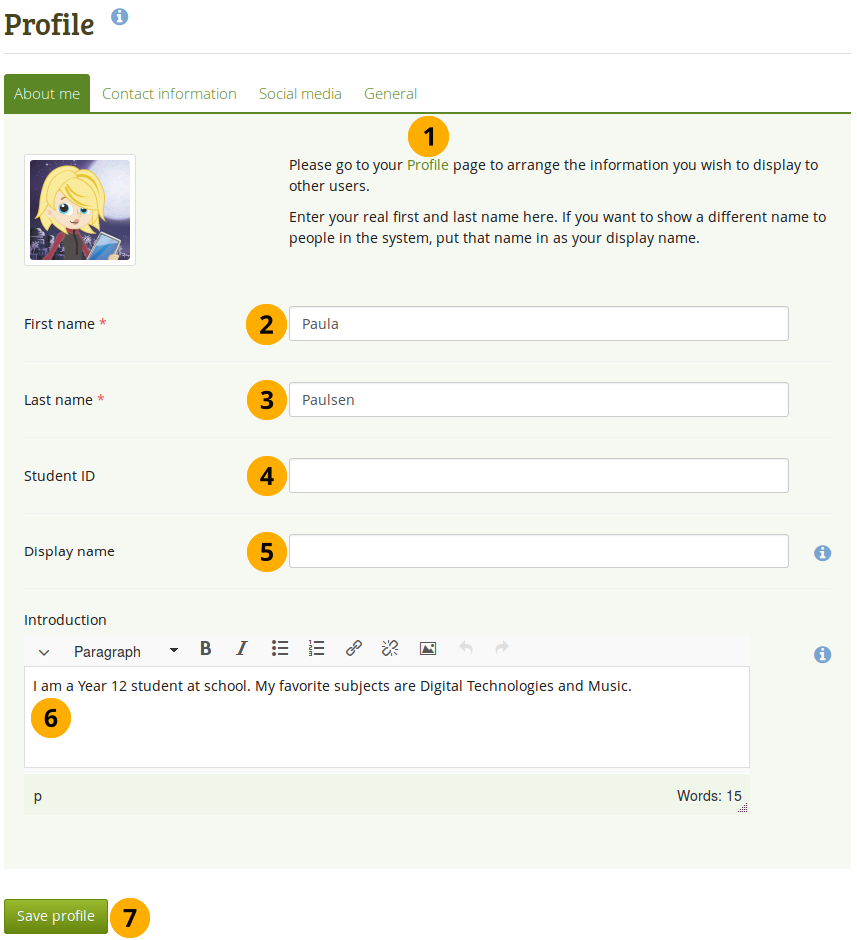
Profile: About me
-
The link Profile takes you directly to the edit screen of your profile page where you can arrange the information you wish to display on this page.
-
First name: Your real given name
-
Last name: You real last name
-
Student ID: Fill it in if it is required
-
Display name: The name by which you want to be known around Folioz. If you have a display name, your real name will not be visible to regular Folioz users. Only administrators can see your real name and your username at all times.
-
Introduction: You can write about yourself. This text is placed onto your profile page automatically unless you take the introduction out of your profile page.
If you log in via Coursez and your user information is updated upon each login, your introduction will be overwritten by what you have in your Coursez profile description.
-
Click the Save profile button to save your changes.
{tab title="Contact Information"}
Content → Profile → Contact information
General information
You may wish to provide some of your contact information for later use in a page. All details you fill in here are only visible to other users when you put them into a page. Until then only you can see them.
You are not required to provide any of the information asked for on this screen (except for one email address). Do not enter any private information in here that you do not want people to know. When choosing the Profile information block for any of your pages, you can decide which information to show on the particular page for which you choose the block.
However, be very vigilant with your private information. Think about it like providing information on a business card. How much or how little would you want to display there? Do you need to give out your home phone number and postal address? If not, leave them out.
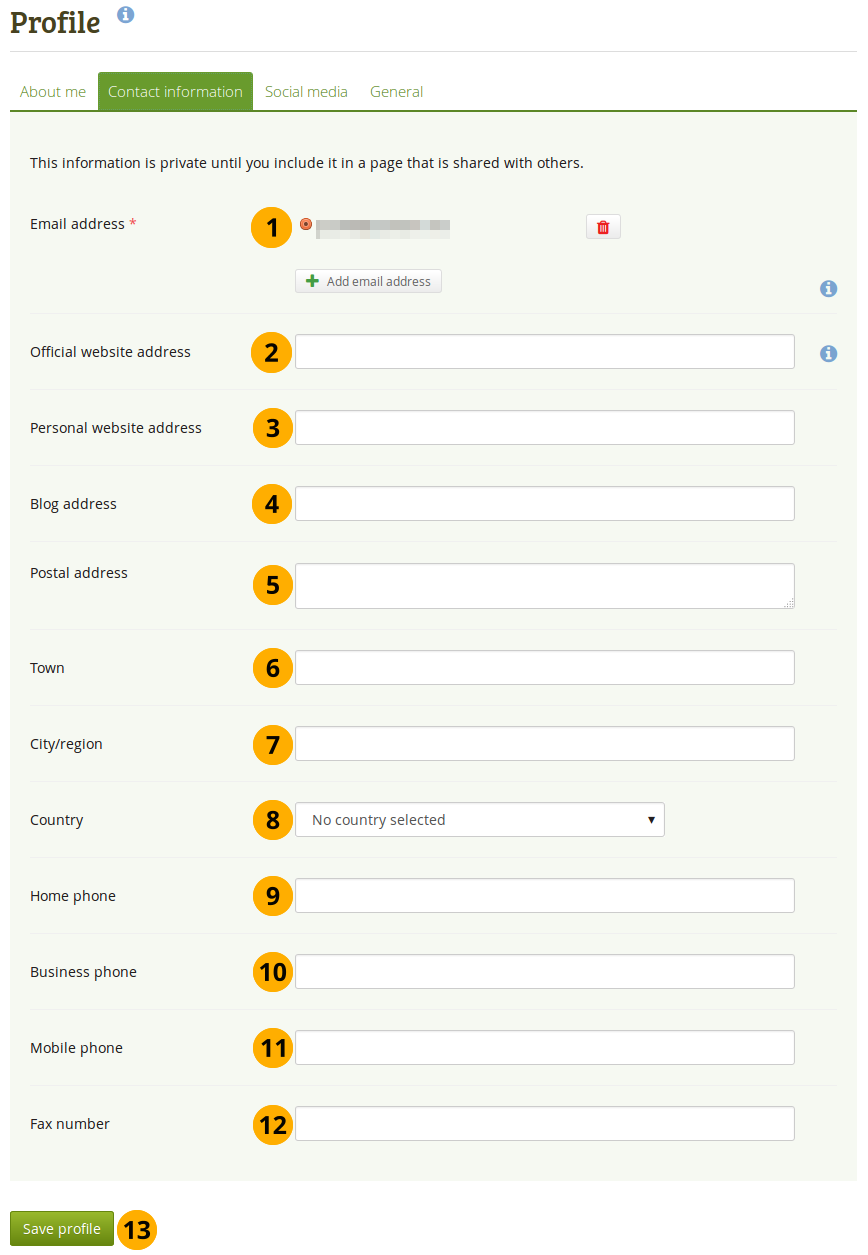
Profile: Contact information
- Email address: You must have at least one email address in the system. Your primary email address, i.e. the first one shown, is the one that is used for any notification from Folioz. You can choose to display your secondary email addresses on specific pages.
- Official website address: If you have a business and want to put the URL to its website into your portfolio, you can enter it here.
- Personal website address: If you have a website for yourself, you can enter its URL in here and include it easily into your pages.
- Blog address: If you have a blog, copy its URL in here so you can use display it in your pages easily.
- Postal address: Enter your postal address in here if you wish.
- Town: Enter the town you live in / work at here. It should match your postal address.
- City / Region: If you have a further distinguisher to where you live, enter it here.
- Country: Choose the country you live in from the drop-down menu.
- Home phone: Enter your home phone number here.
- Business phone: Enter your business phone number here if you wish.
- Mobile phone: You can also provide your mobile phone number.
- Fax number: If you have a fax number where people can send you documents, enter it here.
- Click the Save profile button to save your changes.
Add and delete email addresses
The email address with which you registered on Folioz is displayed. You can add other email addresses to your profile so that you can use them later on.
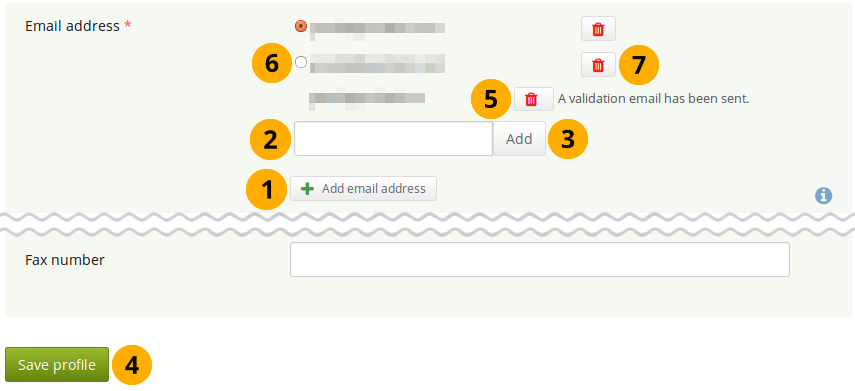
Profile: Add or delete an email address
-
On Content → Profile → Contact information click the button Add email address. A text field is being displayed.
-
Enter your email address into the text field. Make sure you do not have any spelling mistakes in it.
-
Click the Add button.
-
Click the Save profile button at the bottom of the page. Only then is the authorization email sent to this email address to verify that it can be added. Follow the instructions in that email to continue.
-
Until you verify your email address, it is displayed, but cannot be used. You can delete it at any time by clicking the Delete button
 .
. -
Once you verified your email address, it is added as secondary address.
If you mark one of your secondary email addresses with the radio button and click the Save profile button, this address becomes your primary email address and the one to which all notifications are sent.
-
Click the Delete button
 to delete an email address that is not your primary one.
to delete an email address that is not your primary one.
General
Content → Profile → General
This tab is primarily for adult users who wish to use their portfolio in an employment context.
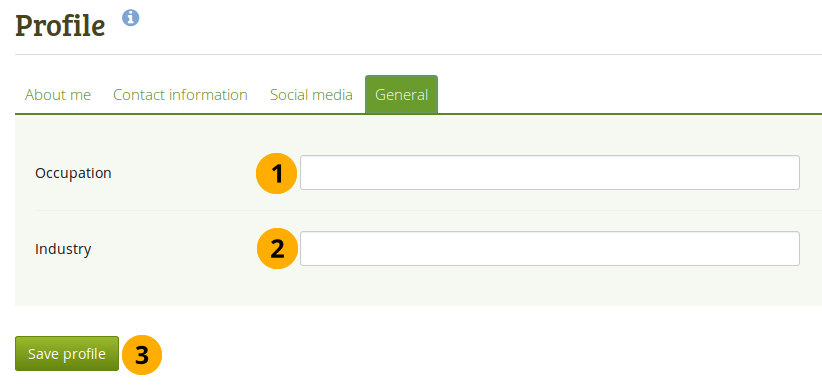
- Occupation: Enter your job title if you wish.
- Industry: Enter the industry in which you work.
- Click the Save profile button to save your changes.


 if you want to make changes to a certain social network.
if you want to make changes to a certain social network.